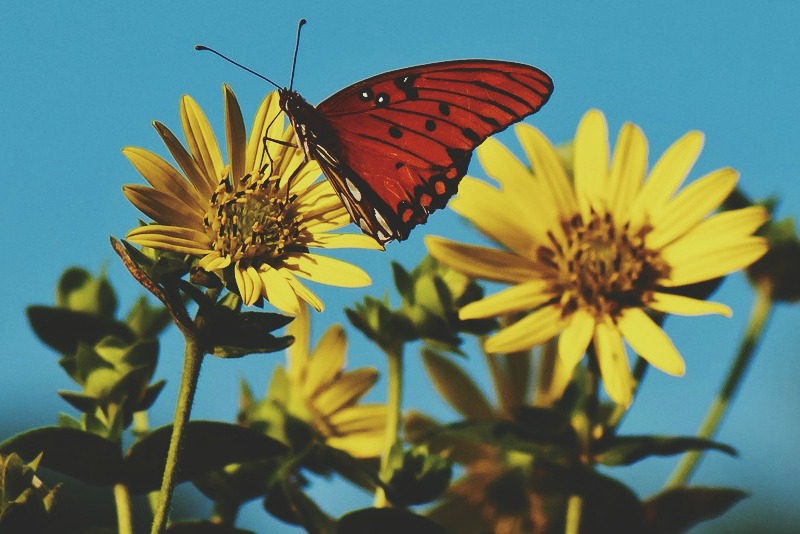 After focusing on bees last week, I’m sharing some information about butterflies this week! Butterflies might not be as significant in the pollination world as bees, but they do help flowers and plants thrive. Please note that I am not a butterfly expert. I’m just relaying a few details that I've learned over the years.
Attract butterflies to your garden by creating a landscape filled with helpful nectar plants and host plants. The butterflies will need delicious pollen to eat and other plants perfect for holding their eggs.
There are 5 main types of butterflies. These 5 types make up an estimated 15,000 - 28,000 species of butterflies. Maryland is home to about 151 of these species. Below are butterfly types and facts...
After focusing on bees last week, I’m sharing some information about butterflies this week! Butterflies might not be as significant in the pollination world as bees, but they do help flowers and plants thrive. Please note that I am not a butterfly expert. I’m just relaying a few details that I've learned over the years.
Attract butterflies to your garden by creating a landscape filled with helpful nectar plants and host plants. The butterflies will need delicious pollen to eat and other plants perfect for holding their eggs.
There are 5 main types of butterflies. These 5 types make up an estimated 15,000 - 28,000 species of butterflies. Maryland is home to about 151 of these species. Below are butterfly types and facts...
Papilionoidea: commonly known as swallow-tail because their colorful, large, black wings have small extensions that look like tails. swallowtails are usually black with yellow or blue dots and large wings.
Lycaenidae: commonly known as gossamer-wing, hairstreaks, coppers, or blues. Lycaenidae butterflies are small but colorful.
Riodinidae: commonly known as metalmarks because their coloring is metallic. Metalmarks come in lots of different shapes, sizes, and patterns and live mostly in the tropics.
Nymphalidae: commonly known as brush-foots as their tiny front legs act like taste buds to taste their food. The Monarch butterfly is a type of the Nymphalidae butterfly that is black with white polka dots. Monarch butterflies migrate to warm climates and can live up to 8 months; most other butterflies only live one month or less.
Pieridae: commonly seen yellow, sulfur, or white butterflies that are found mostly around vegetable gardens.
A butterfly has 4 stages to their life cycle: egg, caterpillar, pupa, and butterfly. Their life cycle starts when a butterfly lays an egg on a host plant. The egg hatches into a caterpillar, the caterpillar eats the host plant for nourishment, the caterpillar spins around itself a hard shell called a chrysalis. Inside the shell the resting caterpillar is called a pupa, finally the pupa hatches into an adult butterfly. The adult butterfly lays eggs and the cycle starts again. Different butterflies have different nutritional needs. Some butterflies use flower nectar as food but some like the nibble on herbs, some like rotting fruit, and some need minerals from rocks and sand. It is best to visit your local Extension Office to inquire about native plants that will attract pollinators like butterflies. There are so many different flowering plants and bushes that you can add to your garden to attract butterflies. A few of my favorites are sweet pea, lilac, butterfly bushes, Shasta daisy, chrysanthemum, and burning bush. Gardens With Wings is a fantastic resource if you are trying to attract pollinators to your garden! Just enter your zip code and you’ll be rewarded with a a list of native and imported plant species that will thrive in your climate zone. Happy gardening and I hope that lots of butterflies visit your flowers and your gardens this season! -Ami